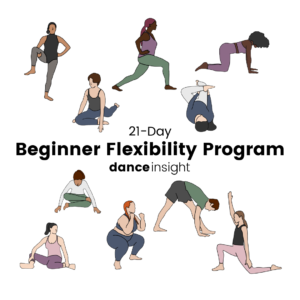Why isn’t Dance in the Olympics?
Every time I watch the Olympics, I find myself asking why my sport doesn’t get to be part of it. Sure, you could argue that dance is more of an art form than a sport (see my article on whether dance is an art, a sport, or both), but isn’t figure skating artistic? What about the floor event in gymnastics? Well, I decided to get to the bottom of it and find out the answers to our burning questions. Why isn’t dance in the Olympics? Might it be included someday? Read on to find out!
What makes a sport Olympics-worthy?
According to this article from Encyclopaedia Brittanica, in order for a sport to be considered for inclusion in the Olympics, it must first be officially recognized as a sport by the International Olympic Committee. In order for that to happen, the sport must meet a few criteria:
- Must have administration by an international, nongovernmental organization.
- Must follow all the rules of the Olympic Charter, such as conducting regular drug screenings on athletes.
Once it’s officially recognized by the IOC, the sport’s administration must file a petition to be included in the games. This is where it gets complicated. Among other things, the sport has to prove that:
- It is practiced by men in at least 75 countries and women in at least 40 countries, on at least 3 continents.
- It increases the value and appeal of the Olympic games.
- It is not purely a “mind sport,” an unfortunate rule for chess, e-sports, and many others.
- It is not dependent on mechanical propulsion, an unfortunate rule for car racing.
For every Olympic games, the IOC votes on which sports to include. This happens many years in advance. The initial round of voting for Tokyo 2020 took place in 2013. Technically, all sports are up for review after every Olympics, but the 25 core sports will only be dropped in extreme circumstances (like a drug scandal or a dramatic decrease in popularity). Only 3 additional sports will be chosen for each games, making the competition pretty tough.
According to this article from Topend Sports, the Tokyo 2020 committee added the following criteria for new sports being considered for the games:
- Added value to the games overall
- Youth appeal
- Attractiveness for TV, media, and the general public
- Gender equality
- Minimal impact on costs, infrastructure, organization headache, etc.
Good news! Dance is officially a sport.
Yes, dancers, the next time you’re trying to convince your football player friends that dance is a sport, just send them over to the Association of IOC Recognized Sports Federations member list, where you can clearly see the World Dancesport Federation is included. (This article is easier to read, but not on the official site.)
However, “Dancesport” refers only to competitive ballroom dancing. It may still be awhile before jazz, tap, ballet, etc. is recognized, but this is a great and exciting start.
In fact, according to to this article from Topend Sports, dance was in the running for Tokyo 2020, but got cut on the first round of voting. (Reminds me of a lot of auditions I’ve been to lately.) Will it be considered for Paris 2024? We’ll find out when they vote for new sports in 2019.
What would dance in the Olympics look like?
Many years in the future
As much as we would love our sport to reach the highest level of international recognition possible, inclusion in the Olympic games, it may be a long time before that actually happens. We’re competing against popular sports such as golf, bowling, and surfing for one of those precious spots on the program. You and I might never be Olympic medalists, but our children might be!
If this selective process doesn’t seem fair, keep this in mind: as much as the Olympics is a platform for international cooperation and peace-building, it is also a kind of business. They spend money building and renting facilities, flying people in and booking them in hotels, having all the medals made, and so on. They earn money when people purchase tickets and companies buy ad time during their TV programs. They have to earn more money than they spend, or they go broke.
When they add a new game, they have to be sure that enough people will want to watch it (ticket sales, TV commercials) so that they can at least break even for the money spent organizing it (hiring officials, building/renting facilities). That’s why they can’t include every sport there ever was. It’s sad, but I think dance could be a pretty good money maker, so we’ve got a chance!
How would you qualify?
One of the important qualifiers of all Olympians is that you need to be “amateur” status. That means you can’t have been paid to dance. Once you’ve been paid to dance, you’re considered a professional, and wouldn’t be able to compete in the Olympics.
They might go the route of gymnastics and impose an age restriction. We’ve all seen what competitive dance does to young kids and their families in reality shows like Dance Moms, so I think an age restriction of 16 would be a good idea. 16 is still plenty young, giving you many opportunities to compete in the Olympics before you age out of your prime.
And you would, of course, have to reach the highest level of non-Olympic competition. Visit usadance.org to read more about dancesport and their competition structure.
What do you think? Should we have dance in the Olympics? If we did, would you want to compete? Share your thoughts in the comments below!







